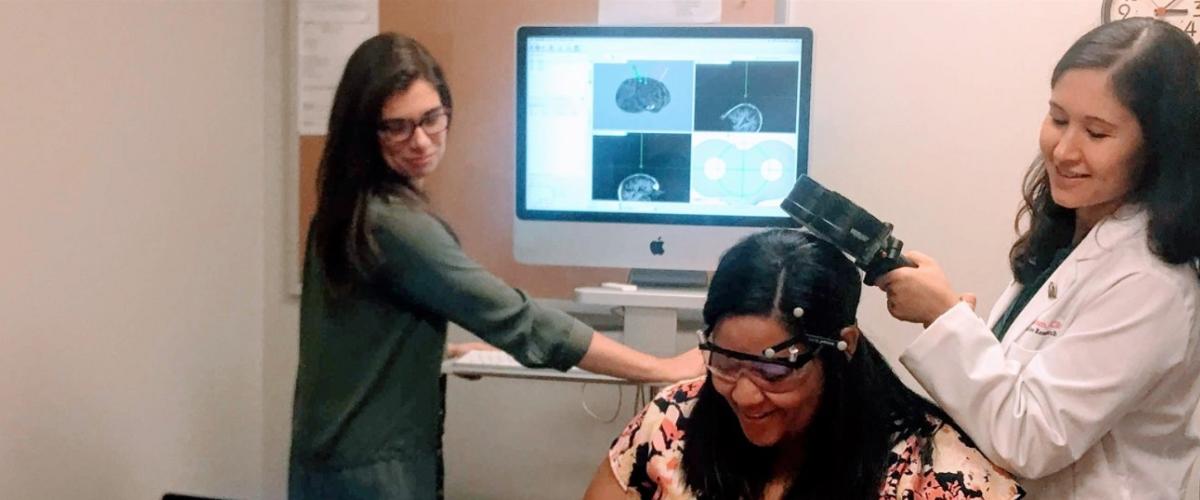
In the near future, neurologists may be able to use magnetic stimulation of the brain to provide powerful, lasting benefits to people living with dystonia and other movement disorders.
This discovery was made possible thanks to a collaboration between neurologist Noreen Bukhari-Parlakturk, MD, PhD, imaging experts and engineers, and a group of volunteers living with focal hand dystonia.
The therapy, known as transcranial magnetic stimulation or TMS, has already been used to treat depression and other conditions. An electromagnetic coil provides short magnetic pulses that stimulate cells within the brain.
Bukhari’s team first used a brain imaging technique known as magnetic resonance imaging (MRI) to identify brain regions specifically affected by focal hand dystonia. They then applied TMS to a group of volunteers with the conditions, targeting the identified brain regions . The volunteers who received the session reported reduced posturing and pain and were able to write more legibly.
Bukhari-Parlakturk’s study identified regions of the brain that could serve as targets for future non-invasive brain therapy in dystonia. But a surprising and even more positive outcome came from the patients themselves.
“Our goal for this research was to understand the relationship between TMS and dystonia symptoms and signs. We didn’t expect long-term clinical benefits,” said Bukhari-Parlakturk. “But our volunteer participants have told us that they have observed sustained improvements in their dystonia symptoms ranging from two weeks up to one month later.”
“This news was both very exciting and a good reminder of the importance of listening to our volunteers. We realized we were learning as much from their experience as we were from the technical data we were collecting from them,” Bukhari-Parlakturk said.
Bukhari-Parlakturk hopes that a future clinical trial can build both on these results through a partnership between dystonia providers and people living with this condition. “People living with dystonia have been critical to the success of this project. We couldn’t do this kind of work without them.”
Using A.I. to Recognize Handwriting
While studying potential therapies for dystonia, neurologist Noreen Bukhari-Parlakturk, MD, PhD, ran into a problem: How do you objectively measure differences in the symptoms caused by this condition? To be effective, any measure would need to objectively observe any individual’s changes over time, while also being reproducible for people with different symptoms and handwriting styles.
To overcome this challenge, Bukhari-Parlakturk and her colleagues developed and tested a series of software-based writing measures that could distinguish between people with and without focal hand dystonia, and measure how well these measures could differentiate between these two populations. After comparing the writing samples from volunteers with focal hand dystonia with a group of age-matched volunteers without dystonia, the team identified two software-based writing measures that met all the criteria to use as an objective measure in a clinical study, making them suitable for future clinical trials in dystonia. Their results were published in the October 2022 issue of Movement Disorders. “We are very excited to identify software-based measures of writing that can not only measure the benefit of our TMS studies but can also be used to help other focal hand dystonia clinical trials succeed,” Bukhari-Parlakturk said.
Be a Part of Our Research
The Duke Comprehensive Parkinson’s Disease and Movement Disorders Clinic conducts a variety of clinical trials. These trials help us develop better treatments for people affected by movement disorders. Patient participation plays a critical role in these trials. For more information, learn more about trials available at Duke or email movdisres@duke.edu.